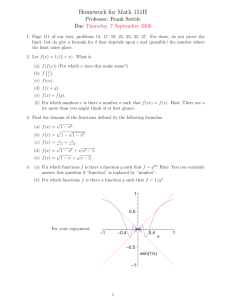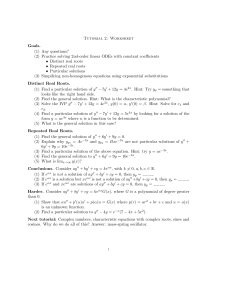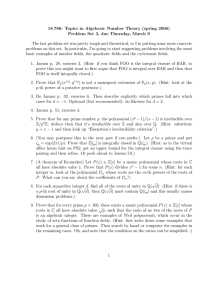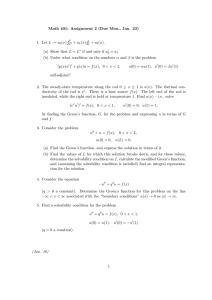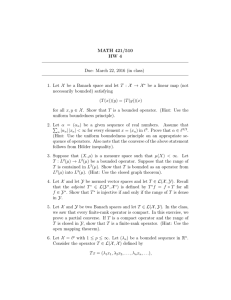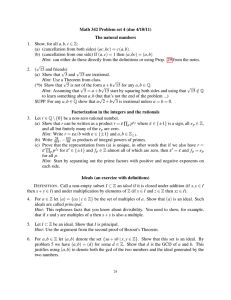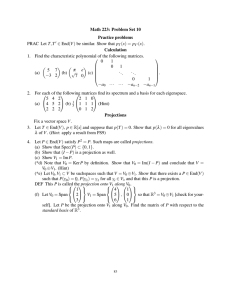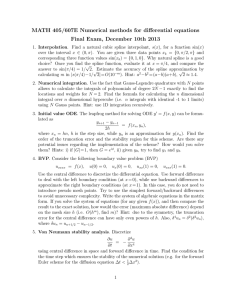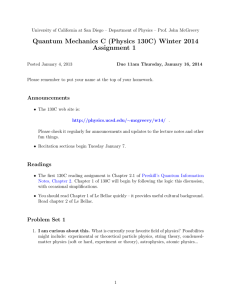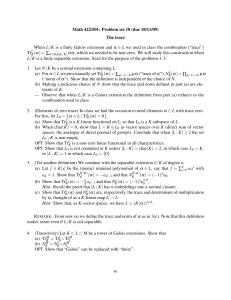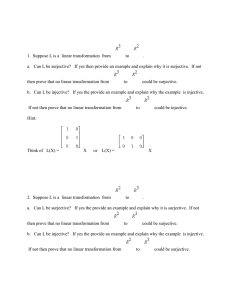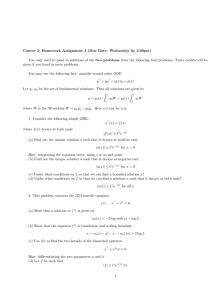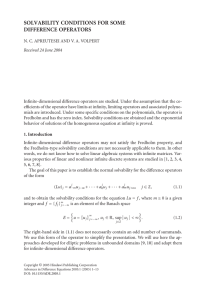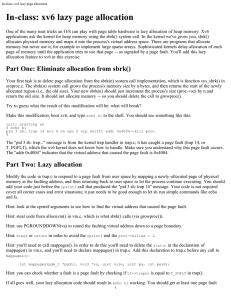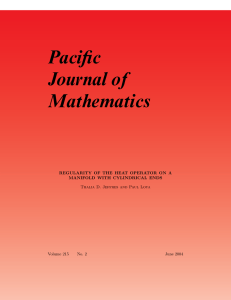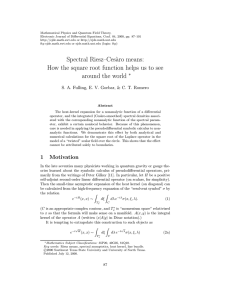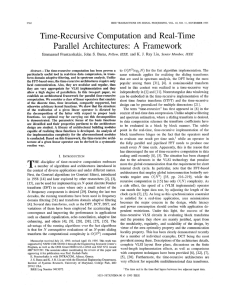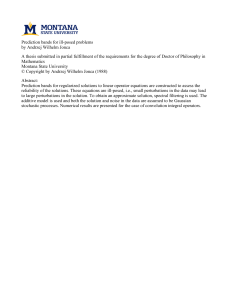MATH 519 Homework Fall 2013
advertisement
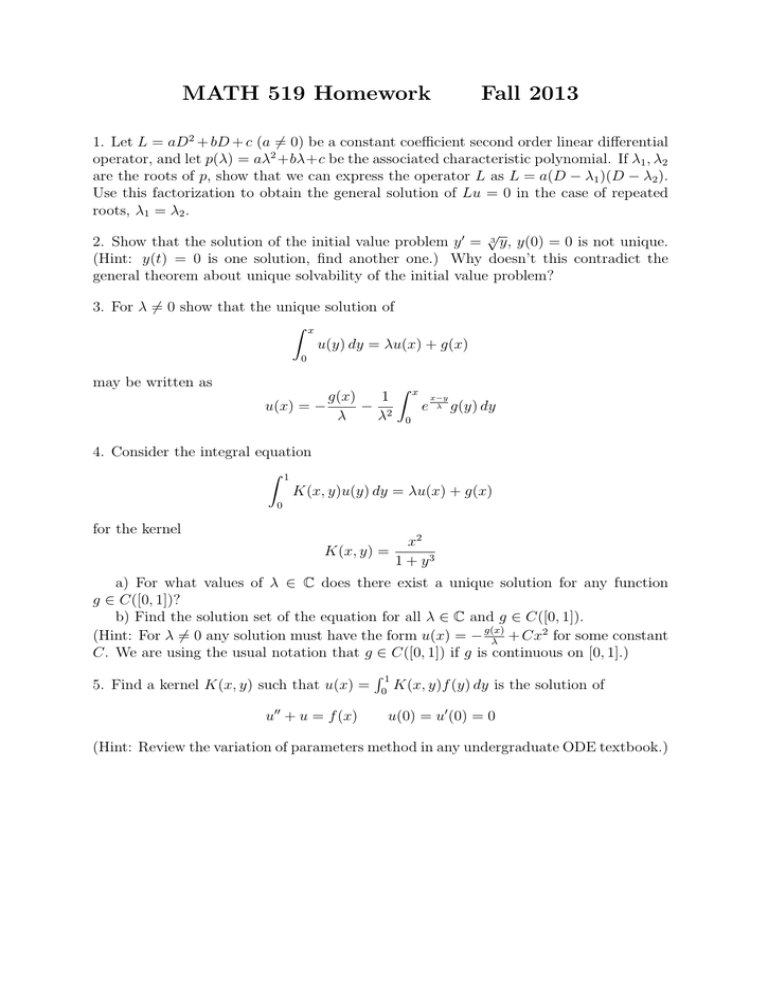
MATH 519 Homework Fall 2013 1. Let L = aD2 + bD + c (a 6= 0) be a constant coefficient second order linear differential operator, and let p(λ) = aλ2 +bλ+c be the associated characteristic polynomial. If λ1 , λ2 are the roots of p, show that we can express the operator L as L = a(D − λ1 )(D − λ2 ). Use this factorization to obtain the general solution of Lu = 0 in the case of repeated roots, λ1 = λ2 . √ 2. Show that the solution of the initial value problem y 0 = 3 y, y(0) = 0 is not unique. (Hint: y(t) = 0 is one solution, find another one.) Why doesn’t this contradict the general theorem about unique solvability of the initial value problem? 3. For λ 6= 0 show that the unique solution of Z x u(y) dy = λu(x) + g(x) 0 may be written as g(x) 1 u(x) = − − 2 λ λ Z x e x−y λ g(y) dy 0 4. Consider the integral equation Z 1 K(x, y)u(y) dy = λu(x) + g(x) 0 for the kernel K(x, y) = x2 1 + y3 a) For what values of λ ∈ C does there exist a unique solution for any function g ∈ C([0, 1])? b) Find the solution set of the equation for all λ ∈ C and g ∈ C([0, 1]). (Hint: For λ 6= 0 any solution must have the form u(x) = − g(x) + Cx2 for some constant λ C. We are using the usual notation that g ∈ C([0, 1]) if g is continuous on [0, 1].) R1 5. Find a kernel K(x, y) such that u(x) = 0 K(x, y)f (y) dy is the solution of u00 + u = f (x) u(0) = u0 (0) = 0 (Hint: Review the variation of parameters method in any undergraduate ODE textbook.)
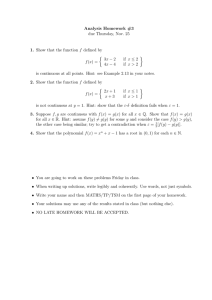
![Mathematics 121 2004–05 Exercises 2 [Due Friday November 26th, 2004.]](http://s2.studylib.net/store/data/010730625_1-988c78a9f06bc5f2972224dbe482bfe5-300x300.png)
